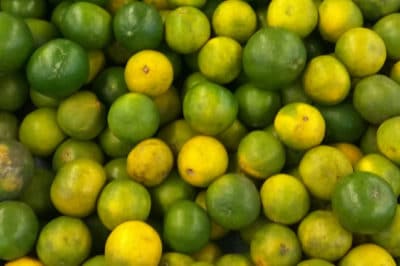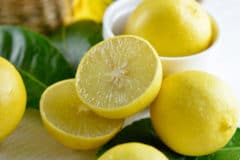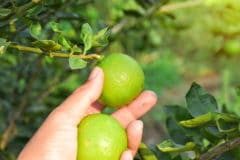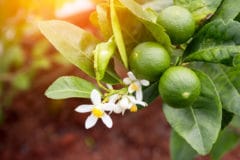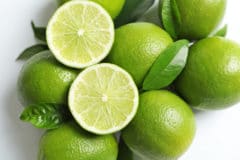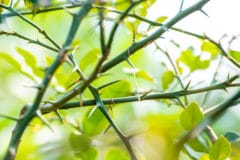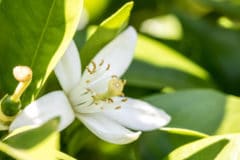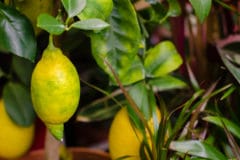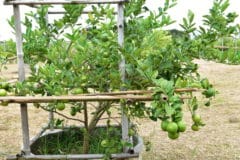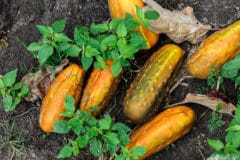How Ripening Affects a Lime’s Flavor
Limes are classified as either sour or sweet:
- Sour Persian limes (Citrus latifolia, USDA zones 9 through 11) bring a spicy-tart flavor to our cocktails, salad dressings, salsas and sauces. That’s due to their acidity, which is highest before they ripen. But yellow Persian limes just taste bland. Stick with the green ones.
- Key limes (Citrus aurantifolia) grown in USDA plant hardiness zones 10 and 11 are an exception to the sour-to-bland rule. They retain their acidity and tartness even when completely yellow. And by letting them turn yellow and drop from their trees, you avoid their thorny branches.
- Sweet limes (Citrus limettoides) are believed to be a low-acidity cross between Key limes and lemons (Citrus limon) or citrons (Citrus medica). When ripe, they’re greenish to orange-yellow. Depending on the source, they’re described as refreshingly sweet, bland or slightly bitter. Although rare in the U.S., sweet limes grow in USDA zones 9 through 11.
Expert gardener’s tip: Because some sweet limes stay green, the best way to judge their ripeness ripe is by weight. Pick the heaviest, juiciest ones.
Other Reasons for Yellow Limes
So loaded with green Key or Persian limes that you absolutely need to store them? Just know in advance that after sitting for three to four weeks between 48° and 50°F (8.9° and 10°C) they’ll start turning yellow. Leave them for two months, and they’ll finish the job.
Expert gardener’s tip: Storage-related yellowing doesn’t affect Key or Persian limes’ acidity or flavor. It’s purely cosmetic.
Sunburn
All limes, regardless of variety, are vulnerable to sunburn. It surfaces as leathery, yellow to brownish-yellow patches and typically affects fruit on the south or west sides of a tree.
To prevent sunburn, never prune more than 20 percent of a lime tree’s canopy in single year. This minimizes the fruit’s exposure to strong sun when wind blows through the leaves. Like storage-related yellowing, sunburn is cosmetic.
